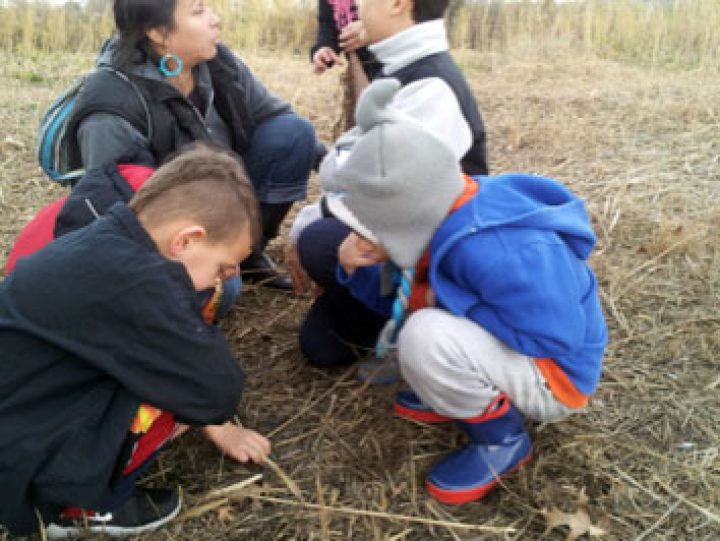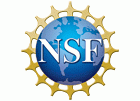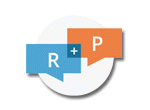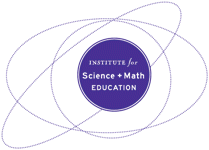Implementing Meaningful STEM Education with Indigenous Students & Families

- Teachers should focus on Indigenous ways of knowing & encourage Indigenous students to navigate between Indigenous & Western STEM.
- District staff and PD providers should build relationships with Indigenous communities they serve and focus PD on Indigenous STEM, including relations to land.
- School leaders need to recognize what it looks like for Indigenous students to learn western & Indigenous STEM and ensure approaches are adopted.
What is the Issue?
Indigenous ways of knowing are often perceived to be contrary to STEM learning, but they are in fact powerful resources for learning. STEM instruction should be made inclusive for Indigenous students by building connections between Indigenous and Western STEM. There are a set of strategies teachers can use to intentionally incorporate indigenous ways of knowing into STEM learning environments—both in and out of school and in relation to family and community.
Authors:
MARISSA SPANG & MEGAN BANG
Reflection Questions
- How can you change your instruction to "center" it on Indigenous ways of knowing?
- Who are partners (parents, teachers, systems leaders, students, organizations) that can help you center Indigenous ways of knowing? How can they help your students navigate multiple ways of knowing?
- Where are some places you can take students to strengthen their connections to their territories and localize knowledge and learning?
Things to Consider
Center Indigenous Ways of Knowing: Make Indigenous ways of knowing central in instruction. One strategy is to draw upon the practice of observation of the natural world that is valued in many Indigenous communities, such as observing animals, plants, and weather patterns over time. These observations are often communicated through oral stories that have been accumulated and built over time and generations. Drawing explicitly upon the culturally valued practices of observation and storytelling—and their analogous NGSS practices of data collection and explanation— provide powerful pedagogical leverage points for STEM learning.
Localize Knowledge & Learning: STEM learning framed in local knowledge—in relation to local practices, and in land- and place-based ways—can enhance the relevance and meaning of STEM for Indigenous students and their communities. Many Indigenous students have responsibilities to their communities and territories (including human and non-human ancestors and future generations), so their learning and lives are often embedded in these responsibilities. Therefore, connecting STEM learning to Indigenous students' everyday lives, their territories, and sets of relations they have, can lead to more meaningful and engaging STEM experiences.
Facilitate Navigation Within & Across Multiple Epistemologies: When engaging Indigenous students in STEM learning, it is critical to explicitly recognize and encourage their border-crossing and navigation of Indigenous and Western ways of knowing as opposed to erasing one or the other or assimilating Indigenous students into Western ways of knowing. This approach first centers on and reinforces Indigenous students' ways of knowing, and secondly teaches them Western STEM. Bridging Indigenous and Western STEM—grounded in Indigenous students' everyday lives, communities, and territories—can lead to more productive STEM learning, expertise, and career trajectories for Indigenous students.
Attending to Equity
- STEM learning for Indigenous students should involve offering them learning and knowing that is land- and place-based, centers (not erases or undermines) their ways of knowing, and builds connections between Indigenous and Western STEM. It also involves creating STEM learning that is relevant to their everyday lives and their interdependent roles and responsibilities that they have to their families and communities, now and in the future. Such learning experiences are more meaningful, relevant and culturallyappropriate.
Recommended Actions You Can Take
- Take your class outside as much as possible and center learning on local flora, fauna, and phenomena--and to reinforce relationships to land. Read about this example and this study.
- Regularly invite guest speakers to share Indigenous STEM and ways of knowing through storytelling.
- Read about orienting to cultural ways of knowing in order to promote inclusive instruction——from the NRC Framework and from SACNAS.
- Identify and partner with an out-of-school community-based organization to connect STEM learning in school and out of school.
ALSO SEE STEM TEACHING TOOLS
STEM Teaching Tools content copyright 2014-22 UW Institute for Science + Math Education. All rights reserved.
This site is primarily funded by the National Science Foundation (NSF) through Award #1920249 (previously through Awards #1238253 and #1854059). Opinions expressed are not those of any funding agency.
Work is licensed under a Creative Commons Attribution-ShareAlike 4.0 Unported License. Others may adapt with attribution. Funded by the National Science Foundation (NSF). Opinions expressed are not those of any funding agency.


 Email Feedback
Email Feedback


